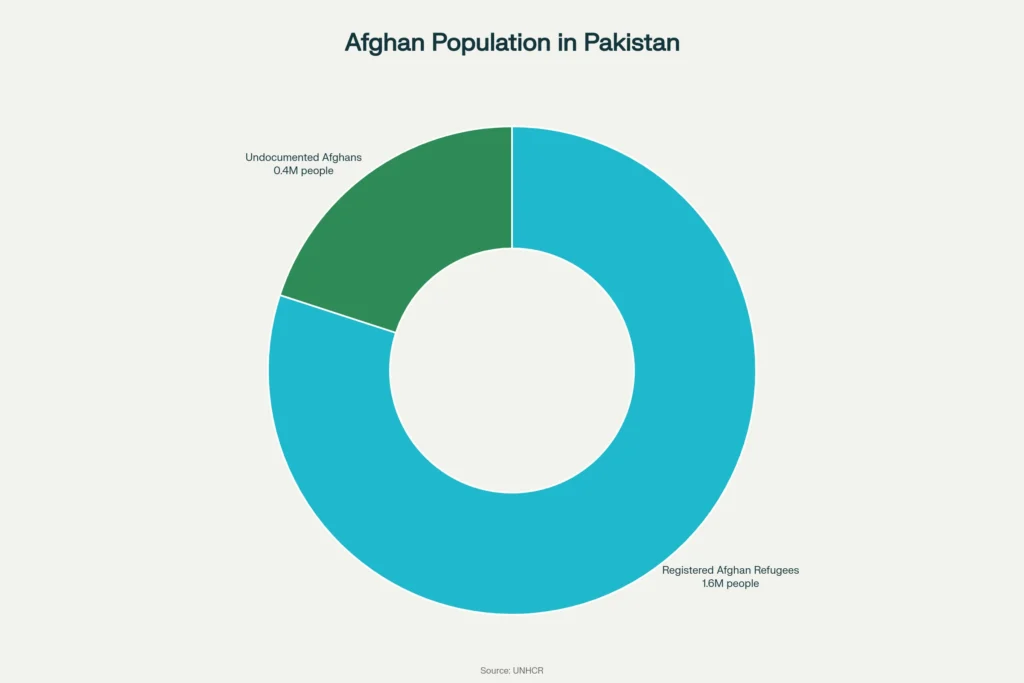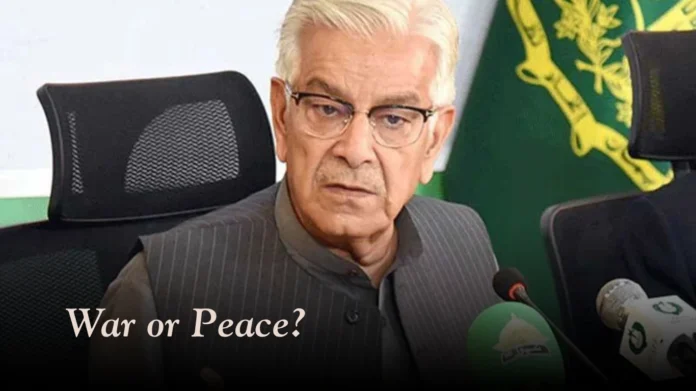Key highlights
- Pakistan’s defence minister said “war will happen” if the Istanbul round fails, raising pressure on the Afghan-Pak peace talks.
- Mediators Türkiye and Qatar confirmed an Oct 19 ceasefire in Doha and a follow-up joint statement in Istanbul on Oct 30 to build a verification mechanism.
- Official data show the border crisis affects people and trade: Pakistan hosted about 1.6 million registered Afghan refugees at the start of 2025, and Pakistan’s export receipts from Afghanistan were about 88.1 million USD in July 2024 alone.
Opening overview
The Afghan-Pak peace talks face a pivotal moment after Pakistan’s defence minister Khawaja Asif warned that “war will happen” if negotiations fail, a statement delivered on the eve of another Istanbul session. The Afghan-Pak peace talks were conceived to stabilise a volatile border, curb militant activity, and restore commercial flows that underpin livelihoods on both sides. In the short term, the Afghan-Pak peace talks are tethered to a ceasefire reached in Doha on Oct 19 and reinforced by a joint statement in Istanbul on Oct 30.
Mediators have pushed for a monitoring and verification mechanism to keep the truce credible. That institutional step matters because communities along the frontier live with the consequences of closures, drone claims, and skirmishes that discourage trade and lengthen humanitarian lines. UNHCR records confirm Pakistan’s long-standing role as a major host of Afghans, with around 1.6 million registered refugees and asylum-seekers at the start of 2025, a reminder that any collapse in the Afghan-Pak peace talks quickly becomes a human story.
Economic signals are equally clear. The World Bank has linked Afghanistan’s trade fluctuations to frequent border disruptions, and State Bank of Pakistan data show that in July 2024 alone, export receipts from Afghanistan were roughly 88.1 million USD, a tangible stake in stability. The Afghan-Pak peace talks therefore carry more weight than rhetoric: they are a test of whether political will can outpace escalation and whether communities dependent on cross-border ties can count on predictable rules.
Ceasefire architecture and what it demands of both capitals
- Monitoring and verification are central to keeping the truce intact.
- The Afghan-Pak peace talks hinge on credible penalties for violations and restraint in public messaging.
The Oct 19 Doha announcement by Qatar’s Ministry of Foreign Affairs confirmed an immediate ceasefire between Afghanistan and Pakistan, with a commitment to build mechanisms for long-term stability. This was followed by an Oct 25–30 series in Istanbul that produced a joint statement from Türkiye’s Ministry of Foreign Affairs, recording consensus to continue the ceasefire and work toward verification. Those two formal steps define the current scaffolding for the Afghan-Pak peace talks.
Verification matters for two reasons. First, it creates a shared record to investigate incidents, lower the temperature, and assign responsibility when weapons fire or drones are alleged. Second, it gives mediators a structured file to present options, whether confidence-building measures or calibrated penalties. Türkiye and Qatar have already framed the task in those terms, noting the need for accountability, restraint, and a mechanism that can investigate and penalise violations. In practice, that means the Afghan-Pak peace talks must agree on contact points, timelines for incident reporting, and thresholds for third-party observation.
The political challenge is that hardline public statements can hollow out verification before it starts. When leaders speak in absolutes, tactical actors at the frontier may feel licensed to test limits. The Afghan-Pak peace talks therefore have to align rhetoric and rules, reduce unilateral moves along the border line, and codify steps such as joint hotlines, synchronized patrol pauses, and rapid-response fact-finding teams. If that framework is locked in, even sharp disagreements can be processed through procedure, not artillery.
Official reference points inside the talks
| Formal step | Date | What it did |
|---|---|---|
| Doha ceasefire announcement by Qatar MFA | Oct 19, 2025 | Confirmed immediate truce and a pathway to mechanisms |
| İstanbul joint statement by Türkiye MFA | Oct 30, 2025 | Logged consensus to maintain the ceasefire and pursue verification |
Trade, crossings, and the material cost of uncertainty
- Border closures and delays strain supply chains; restoring predictable crossings is core to the Afghan-Pak peace talks.
- Official data reveal scale, from export receipts to documented refugee caseloads.
Trade and transit are where diplomatic abstractions become dinner-table prices. The World Bank’s Afghanistan Economic Monitor has repeatedly tied export volatility to policy shifts and frequent border disruptions, underscoring how chokepoints ripple through markets. Pakistan’s own ledgers show the bilateral stake: the State Bank’s country-wise export receipts list Afghanistan at roughly 88.1 million USD for July 2024 alone, a monthly snapshot of commerce at risk when checkpoints close.
These are the kinds of figures the Afghan-Pak peace talks must stabilise. CR, Pakistan hosted around 1.6 million registered Afghan refugees and asylum-seekers at the beginning of 2025, with additional Afghans of varying legal status also present. Any escalation that stalls the Afghan-Pak peace talks risks triggering secondary displacement, complicating documentation regimes, and stretching host-community services.
For traders, predictability is policy. A functional verification mechanism should include a border operations calendar, escalation ladders that avoid full closures, and published service-level targets for customs processing. It should also create an incident insurance pool or guarantee window, so a trucker delayed by a diplomatic flare-up can claim partial compensation. The Afghan-Pak peace talks can win credibility by publishing weekly crossing statistics, average dwell times, and grievance redressal counts, giving markets a simple, trusted dashboard to plan inventory and prices.

Security claims, restraint, and the politics of messaging
- Durable progress in the Afghan-Pak peace talks requires synchronised public communications and off-ramp protocols.
- Mediation works best when both sides accept transparent timelines for claims and counter-claims.
The immediate trigger for the current process was a sharp escalation along the frontier that prompted Qatar and Türkiye to step in, first in Doha and then in Istanbul. Both mediators translated the fragile pause into official communiqués, giving the Afghan-Pak peace talks a documented chain of events to reference. That lineage matters when accusations fly about sanctuary, cross-border fire, or drones. It lets the process default to a file, not fury.
To make that practical, negotiators can adopt three tools. First, a 24-hour “cooling clock” for inflammatory public statements after any incident, ensuring facts are collected before microphones are used. Second, a shared lexicon for communiqués, so words like “violation,” “response,” and “restraint” carry agreed definitions. Third, a neutral repository, hosted by mediators, where incident footage, logs, and forensic materials are time-stamped and reviewed. Formalising these steps would make it harder for spoilers to hijack the Afghan-Pak peace talks with a single clip or claim and would make it easier for both capitals to show domestic audiences that concerns are being processed within rules.
Khawaja Asif’s warning has clearly raised stakes, but it also clarifies the decision tree: either both sides channel grievances through the mechanism that Türkiye and Qatar are brokering, or they revert to the cycle that produced closures and casualties. For the Afghan-Pak peace talks to survive, leaders will need to pair private candour with public restraint and let their verification teams, not nightly talk shows, set the pace.
Economic cushions and humanitarian guardrails that talks should deliver
- The Afghan-Pak peace talks can hard-wire economic and humanitarian safeguards that survive political shocks.
- Small, measurable interventions can defuse pressure on traders and refugees.
Even a well-designed mechanism will be tested by local triggers. The remedy is to embed cushions that keep people and goods moving when politics stutter. On commerce, both sides can pilot a “green lane” for perishable foods and medicines, protected by a no-closure pledge except in extreme, jointly certified cases. The State Bank of Pakistan’s monthly exports ledger illustrates how sensitive bilateral receipts are to disruptions; keeping a subset of lanes open protects consumers and credibility.
On the Afghan side, the World Bank’s monitors flag how export earnings and import costs swing with policy and border frictions, which argues for publishing predictable tariff schedules and avoiding surprise compliance rules at crossings. These simple steps strengthen the Afghan-Pak peace talks by insulating households from rhetoric.
Humanitarian guardrails are equally straightforward. Pakistan’s UNHCR-tracked refugee caseload establishes a duty of care that predates the current crisis. Both sides should institutionalise a humanitarian corridor protocol with pre-cleared aid convoys, portable documentation kiosks, and fast-track medical referrals. Mediators can help align this with UN agencies so that when tensions spike, the Afghan-Pak peace talks already have a living playbook to keep assistance moving. Finally, a bilateral working group could map joint training for border officials on protection standards, including screening, case referral, and family unity procedures, reducing ad-hoc decisions that fuel panic.
If these cushions and guardrails are adopted, they will make it harder for spoilers to convert a single firefight into an economic shock or humanitarian bottleneck. They also give the Afghan-Pak peace talks a public constituency: traders who see shorter dwell times and families who see predictable clinic access.
Closing assessment
The Istanbul round will test whether both governments can move from statement to system. The Afghan-Pak peace talks already have a ceasefire, a mediator-endorsed plan to verify incidents, and a clear picture of what is at stake: refugees whose protection depends on restraint and traders whose margins depend on open lanes. The path forward is practical, not poetic. It requires a hotline that actually rings, penalties that are actually applied, and weekly dashboards that actually publish.
Khawaja Asif’s warning sharpened the choice. Either capitals double down on procedures agreed with Türkiye and Qatar or slide into the cycles that made a ceasefire necessary in the first place. If the Afghan-Pak peace talks produce specific timelines for verification, public-messaging discipline, and protected lanes for essentials, this fragile calm can mature into a routine. If not, the region risks another spiral that burdens border communities first and budgets soon after. For now, the most responsible outcome is boring by design: fewer headlines, more logs, and an Afghan-Pak peace talks process that makes predictable normal again.


